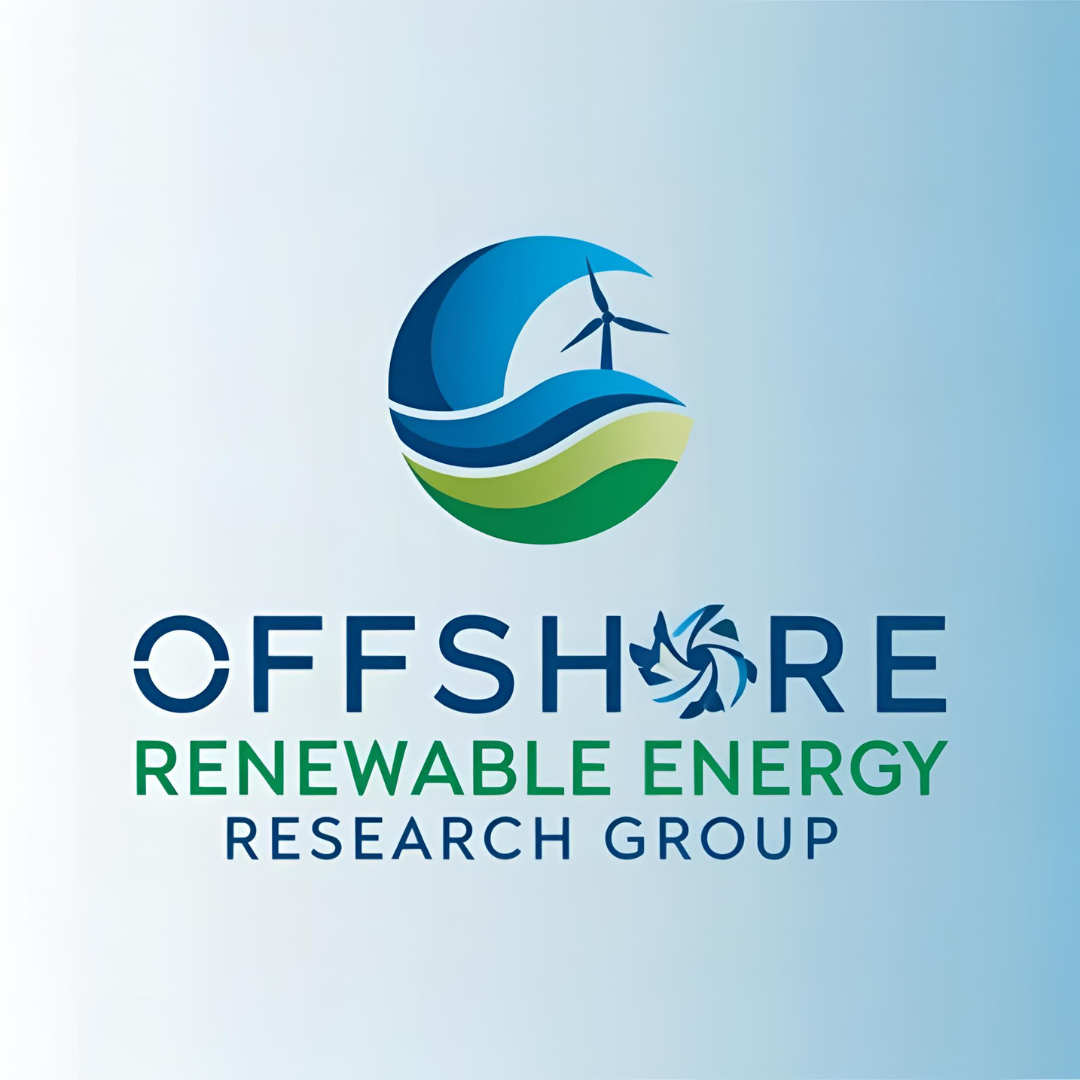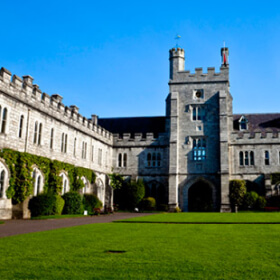IDEA-IRL
Project Information
- Title: IDEA – IRL (Integrated Design Of Floating Wind Arrays Ireland)
- Start Date: Feb 2023
- End Date: Jan 2026
- Funding Body: Sustainable Energy Authority of Ireland (SEAI)
- Coordinator: University College Cork
- Project Members: Dr. Jimmy Murphy Dr. Fiona Devoy McAuliffe Kevin Leyne
- Research Area: Floating Offshore Wind Energy

Aims
The global objective of the IDEA-IRL project is to accelerate the sustainable development of FOWA both domestically and internationally. This will be achieved by building upon key background knowledge and by coordinating and leveraging the international FOWA research effort under the framework of IEA Task 49. Specific project aims and objectives include:
- Deliver a set of fully defined reference sites characteristic of the international global floating wind deployment pipeline, including all relevant technical, social, environmental and economic parameters.
- Deliver a set of fully open source and customisable floating wind array reference designs, including key engineering tool input files, cost and environmental impact models.
- Deliver a Failure Mode, Effects & Criticality Analysis framework for floating wind arrays, including for coupled / cascading failures.
- Engage with the international groups developing innovations for the floating wind energy industry, categorise in terms of multidisciplinary impact and ensure that functionality for their development is included in the reference sites and/or reference farm definitions.
- Engage with the international agencies responsible for Marine Spatial Planning to collect open research questions and concerns. Provide responses directly where possible and otherwise ensure that the reference sites and reference farms are defined in such a manner that they enable the required research.
- Apply the work of Task 49 in an Irish context and engage with the local supply chain to provide specific policy recommendations and development pathways.
- Raise the profile of floating wind energy technology, related research and expertise in Ireland through the delivery of a multifaceted communications strategy.
Work Packages
Work Package 0 – Management and Communication
This WP is responsible for the overall management of the project and the interface both with the SEAI and IEA Wind Task 49.
Work Package 1 – Reference Sites
This WP focuses on defining the metocean (wind, wave etc), geotechnical (soil, bathymetry etc), socio-ecological factors (mammals/bird populations, ambient noise, migratory patterns, fishing zones, existing/future users of the environment etc) and other site-specific conditions (e.g. distance to shore, port availability, exclusion zones, or grid connectivity) for a range of hypothetical reference sites that are representative of the types of conditions in which the initial phase of commercial scale floating wind may be deployed.
In essence, these are the type of site parameters that a developer would collect and use to inform the project design phase. The development of these reference sites will draw on existing open access datasets, ongoing and previous research projects of participants of IEA Wind Task 49. The input of key stakeholders will be solicited through WP4 to ensure that the reference sites are realistic and defined in a manner that will be of use to a broad range of scientific and engineering disciplines. Where data gaps exist, values will be synthesised to ensure full definition of all reference sites.
Sites will be used to inform the design of the reference floating wind arrays in WP2 and will be made open-source and available to the wider research community to facilitate future multidisciplinary FOWA research. This WP will have an international focus, however, several reference sites will be inspired by Irish sites considered in EirWind and OPFLOW.
Work Package 2 – Reference Farms
A full description of at least 10 floating wind farms will be developed to facilitate R&D activities of the floating wind community using input site data from WP1. These designs will provide standardized baselines upon which future FOWA innovations can be developed and their benefits evaluated.
The scope of the reference designs is to define the array layout and the details of the anchoring, mooring, cabling systems and power take off for a given combination of site conditions and floating wind turbine design. All engineering designs will be validated using commercial software to ensure accuracy and relevance of the designs.
The reference farm designs will be ready for use in array-level simulation tools such as FAST.Farm. The design definitions will also include failure rates for components at the floating array scale, developed in parallel with WP3. Customisable open-source cost, carbon footprint and LCA models will be provided for each reference array design. An expert elicitation process among participants in IEA Wind Task 49 will ensure that component level costs are robust and realistic.
This work package will also liaise closely with WP4 to ensure that the reference array designs provide a suitable research platform for the development of FOWA innovations and resolving MSP queries.
At least 2 high potential floating wind innovations, identified in collaboration with WP4, will be assessed using the reference farms for their impact on cost, performance and environmental impact.
As well as the reference designs themselves, this WP will be responsible for the generation of a set of best practice guidelines for the multidisciplinary design of FOWAs. Through collaboration under the framework of IEA Task 49, it is anticipated that these guidelines will form the basis for design standards for floating wind arrays.
Work Package 3 – Array-level failure risks and mitigation
The number of unmanned floating units planned for FOWAs is unprecedented in comparison to other offshore industries. The likelihood of individual components experiencing failures is significant and there is potential for cascading failures when one turbine loses station within the array. Failures in any part of the system, including the turbine, substructure, or cabling, can have array impacts by altering a unit’s motion, interrupting power production, or necessitating repair operations. Importantly, the necessities for mitigating failures are less clear-cut than other industries due to the unmanned nature of the units; cost trade-offs rather than safety constraints are the driving factor behind choices about redundancy and failure prevention.
This WP will build upon existing knowledge from the fixed offshore wind and other marine industries and will follow the approach of a qualitative failure modes, effects, and criticality analysis (FMECA), with the scope of array-level impacts. The results will serve as a framework upon which quantitative FMECAs can be constructed, which could then be used in probabilistic risk analyses. A dedicated workshop will be arranged to meet the three objectives of this WP as an efficient way to gather experts and perform the proposed analysis.
Work Package 4 – Stakeholder Integration
This WP will identify, characterise, and publish the major research questions faced by the industrial, academic and Marine Spatial Planning (MSP) communities in the development of innovations and the strategic planning for FOWAs. Through the deliverables, a feedback loop will be established with the technical work packages to ensure that the reference sites and farms contain a sufficient level of detail and are configured in such a manner to address the identified research needs.
A register of FOWA innovations will be developed and scored using an Analytical Hierarchy Approach to identify innovations with the potential to make the greatest trans-disciplinary impact. A prioritised list will be used to inform the technical developments in WP1 – WP3. At least 2 of these innovations will be selected for impact assessment in WP2.
This WP will engage with relevant agencies to understand and categorise the key questions relating to floating wind. The work will not be related to local planning regulations but on cross-cutting topics, for example: the expected farm density (MW/km2), viable power off take options, required port facilities, grid capacity requirements, viable floating farm project capacities, suitable geotechnical / bathymetry, accessibility limits, impact on marine life, impact on the fishing industry etc. Answers to these questions will be provided where possible and requirements will be passed to WP1 – WP3.
Work Package 5 – Irish Pathways
Within EirWind and OPFLOW several tools, literature reviews and stakeholder networks were developed and employed to produce a blueprint for offshore wind energy in Ireland. This WP will build upon these key inputs to account for the rapidly developing legislative, consenting and technological landscapes related to FOWAs. Background knowledge will be updated and expanded with expert input received through WP4 and employing the array scale design tools developed in WP2.
These advanced project capabilities will then be used to conduct scenario-based modelling of Irish floating wind development pathways accounting for project scale, development timelines, location and power off take strategy. This analysis will form the basis for specific policy recommendations to support the sustainable development of FOWAs in Ireland pre and post 2030. These recommendations will include:
- The likely impact of supporting a demonstration project.
- The suitable level of financial support and/or seabed leasing fee.
- Floating specific amendments to the Marine Planning regime.
- Realistic local content requirements.
- Strategic infrastructure and investment timelines.
- Supports, policies and programs to maximise local content.
This work will include the development of an online supply chain survey and interviews tailored specifically to the Irish context which will be used to inform the analysis.


